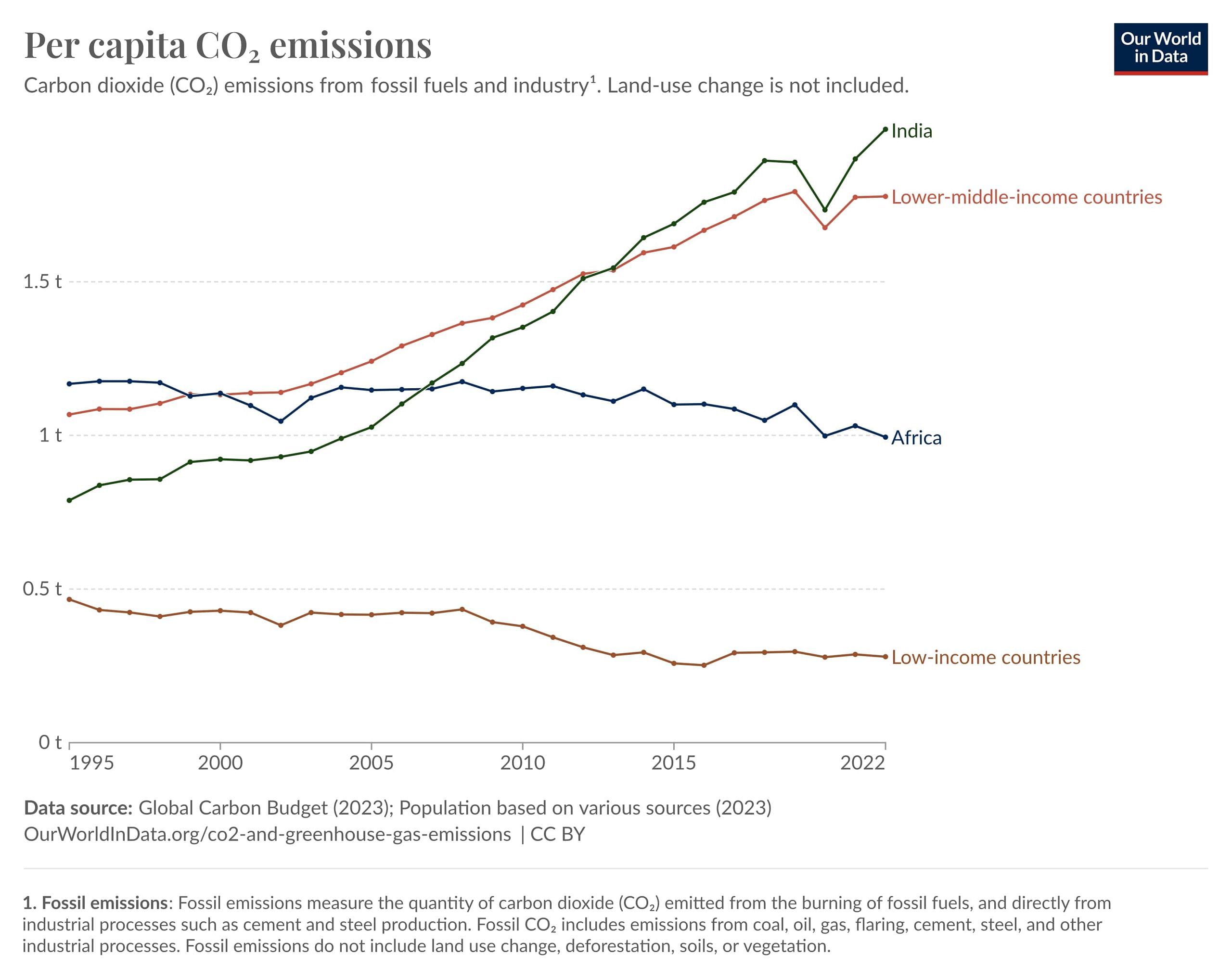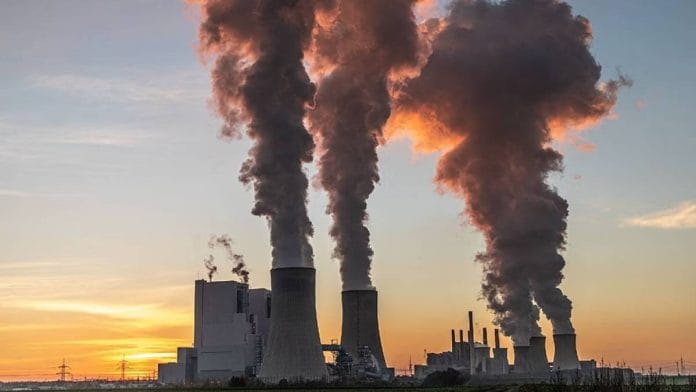A shift seems to be happening in the global climate conversation. As emerging markets become more prosperous and prominent, low-income nations will ask whether these emerging economies are doing their fair share to mitigate global climate change. Strikingly, the statistics are now on the side of the less-developed nations.
In terms of per capita emissions, while India can rightly say it emits less than the West, Sub-Saharan Africa and the less-developed nations can say just as rightly that India is part of the problem.
In absolute terms, India is the world’s third-largest emitter of planet-warming greenhouse gases. But as Indian leaders have vehemently argued, absolute numbers do not matter; instead, we should be using per capita emissions because these adjust for population and present a fairer picture.
However, even on a per capita basis, India’s emissions have been growing steadily and divergently from that of low-income countries.
India’s new position in global climate hierarchy
In 2007, India’s per capita emissions overtook the African average and have continued to creep upwards, now being twice as high. India also emits seven times more than the average low-income country on a per capita basis. The statistics reveal the plain truth: Can India keep representing the poorest when across many metrics, it has graduated from this classification?

The 1992 United Nations Framework Convention on Climate Change (UNFCCC) process stratified the global climate conversation into two groups: the West and the rest. This was backed by the idea of “common but differentiated responsibilities”. Industrialised nations, known as Annex I and II countries, would bear more responsibility, and the richest countries would provide finance to developing ones to help mitigate climate change.
But much has changed since 1992 and new groups of countries have become economic and political powerhouses. The rise of new vocabulary such as “emerging markets” and “BRICS” reflects a fast-changing landscape of geopolitical influence.
There is a big difference between countries like India, China, Russia, Brazil, Indonesia, and South Africa (which are highly influential in the global arena) and Nepal, Myanmar, Zambia, Burundi, and Malawi (which are among the least developed nations).
The developing world is no longer a monolith, and there is a growing risk of new fracture lines emerging due to vastly divergent carbon emissions and economic trajectories. For India, this necessitates a shift in perspective: from viewing itself as an aggrieved party in the climate conversation to recognising that it may itself be a source of grievance for much poorer nations that have contributed far less to the problem.
India stands as the top recipient of climate-related overseas development assistance, having received $5 billion in 2022. Moreover, it can use domestic capital to fund climate mitigation projects. While this does not mean India is getting enough, it does reflect a marked difference from least developed countries, which desperately need more foreign capital and are unable to raise it domestically. It’s time for India to grapple with its new position in the global climate hierarchy and the responsibilities that come with it.
Also read: Ahmedabad lab is now predicting India’s climate future. It’s using ‘atomic time machines’
Internalising new reality
Although the developing world may appear as a unified block in the climate conversation today, it is foolhardy to assume this will always be the case. Not only are the statistics showing clear divergences, but climate impacts are also being felt more acutely. As the situation reaches a boiling point, the finger-pointing will only intensify.
As India advances the logic that countries with higher per capita emissions ought to pay reparations and provide more grant-based financing, Sub-Saharan African countries may apply the same logic against India. Foresighted politicians, think tanks, and leaders must internalise this new reality and calibrate their responses accordingly.
The good news is that for emerging markets, an alternative growth pathway exists, thanks to technological advancements. In India, solar electricity costs three times less than its coal-based alternative. It makes economic sense to run on solar power during daylight hours, even if alternative sources are needed after sunset. This new reality creates a growing role for emerging markets in showing that green growth is not only possible but also desirable.
Emerging markets aspire to global might, but with power inevitably comes the responsibility of global stewardship over the commons. The West will certainly have to play its part, as has been recognised since 1992, but the emerging superpowers cannot continue hiding behind the poorest.
Low-income countries will do the calculations and inevitably realise that these new superpowers must also foot some of the bill. This sentiment is already gathering strength in academia, where ideas take their nascent form. In time, it will spill over into the global political arena—it’s simply a matter of when.
Sugandha Srivastav is a lecturer of Environmental Economics at the Smith School, University of Oxford.
(Edited by Prasanna Bachchhav)







India for a long time has made the case that our per capita emissions are so much lower. That too is shown up in high profile events which show the consumption patterns of the rich and the famous.